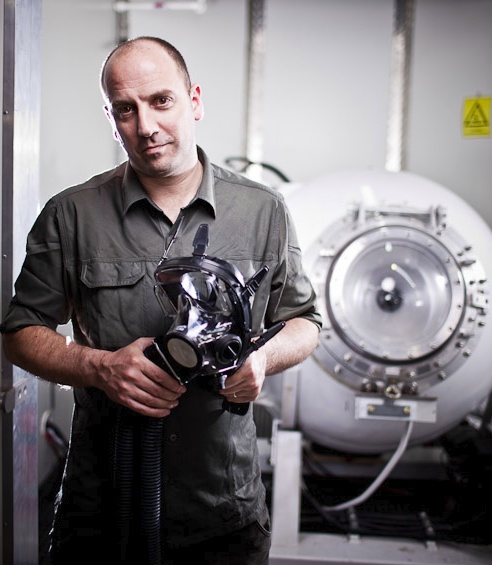TDI’s John Garvin Goes Hollywood
An Interview with John Garvin:

We were able to speak with John to get an inside look into this incredible record breaking expedition. He was the project manager for sub internals and life-support, which means he was ultimately responsible for the pilot’s safety. Here are some of the questions he answered for us.
TDI: How did you get involved in the project? And why?
“The Deepsea Challenger submersible was designed by James Cameron and Ron Allum. I had collaborated with Jim and Ron on various diving projects, including the feature film Sanctum, and they knew my background was in rebreathers, hyperbarics, and cave diving.
Ron thought this unique skill set made me a good candidate to source, install, oversee and test the life support systems inside the tiny (42 inch diameter) pilot sphere. I said “I’d love to help, but I have no experience whatsoever in designing submersibles.” They replied, “Neither do we – welcome to the team!”
None of the Acheron team had ever worked on submersibles before. We were a rag-tag bunch from a wide range of backgrounds including diving, engineering, aviation, sailing, and the film industry. The team’s diverse experience, along with their willingness to think ‘outside the box’, went a long way toward ensuring the mission’s overall success. The sub was built secretly in a sleepy little factory in Sydney, Australia. But somehow we managed to pull it off, and build a submersible capable of withstanding the crushing pressure of seven miles of water (10,900 meters). That’s the cruising altitude of a jet airliner.”
TDI: What was your role – how did that play out?
“My role was Project Manager for the Sub Internals Team. My team was responsible for designing, integrating, testing and maintaining everything that went inside the Pilot Sphere. We basically had to fit 120 complex operating systems, including life-support, ballast controls, thruster controls, computer operating systems, sonar, coms, and imaging into a space not much bigger than a family-sized refrigerator.
I was also the sub’s ‘test pilot’, and spent several hundred hours inside a simulator we had built that reproduced the temperature and humidity the pilot would experience during long-duration dives (during training, John completed a mammoth 18-hour dive inside the freezing simulator). Deepsea Challenger was a prototype vehicle, and the simulator allowed us to test the equipment, learn how to operate the sub and then design a number of safety practices and emergency drills in case things went wrong (which they did – as you’ll see if you watch the film). The simulator allowed the pilots to ‘pre-visualize’ the dive, a useful training tool that is also used in technical diving. In fact, we borrowed many disciplines from technical diving while we were configuring the sphere.
There are hundreds of ways to die when you dive to the bottom of the ocean. It was my job to ensure the pilot was equipped with the equipment and training to get him back safely. Later, during the expedition phase out at sea, my role was to prep the pilot sphere and conduct pre-dive checks with the pilot before sealing the hatch and bolting him in. Once submerged, I would talk to the pilot via voice coms updating him with information and troubleshooting any technical issues.”
TDI: What was the best thing about the challenge? And the worst?
“The most memorable moment of the expedition was when Jim called us to say he’d reached the bottom of the trench. The entire ship exploded in excitement! It was like we were part of the moon landing and ‘The Eagle’ had just landed. As a kid, I remember reading about the Mariana Trench and the adventures of the bathyscaphe Trieste. To be part of a team that actually dove to the bottom of the ocean was surreal – like a dream come true.
The worst part of the expedition was when we lost Andrew and Mike. (Expedition leader Andrew Wight and cameraman Mike deGruy lost their lives in a helicopter accident during the expedition). Andrew was my brother-in-law and a good friend. Losing him and Mike hit everyone hard. The film is dedicated to their memory.”
This film tells the story behind how Cameron, Garvin, and their teams designed, built and dove the submersible. You can check out the trailer and find more information at: https://www.deepseachallenge.com/.




Lascia un Commento
Vuoi partecipare alla discussione?Sentitevi liberi di contribuire!